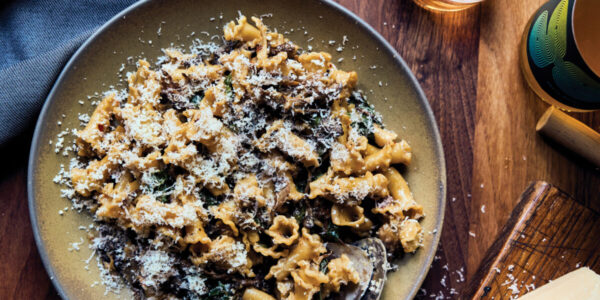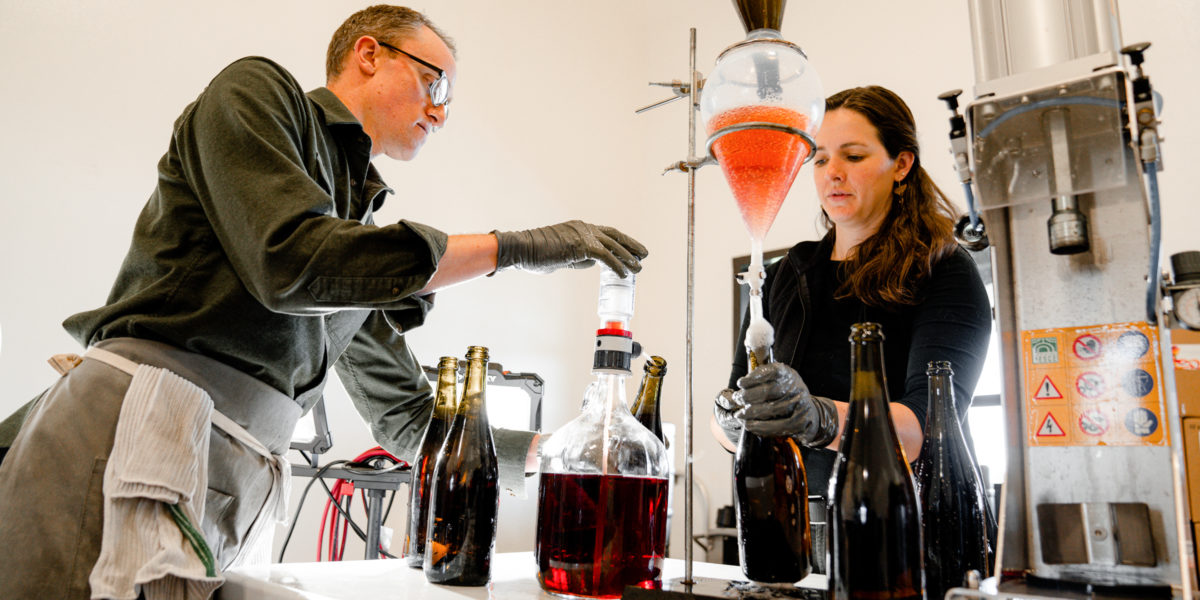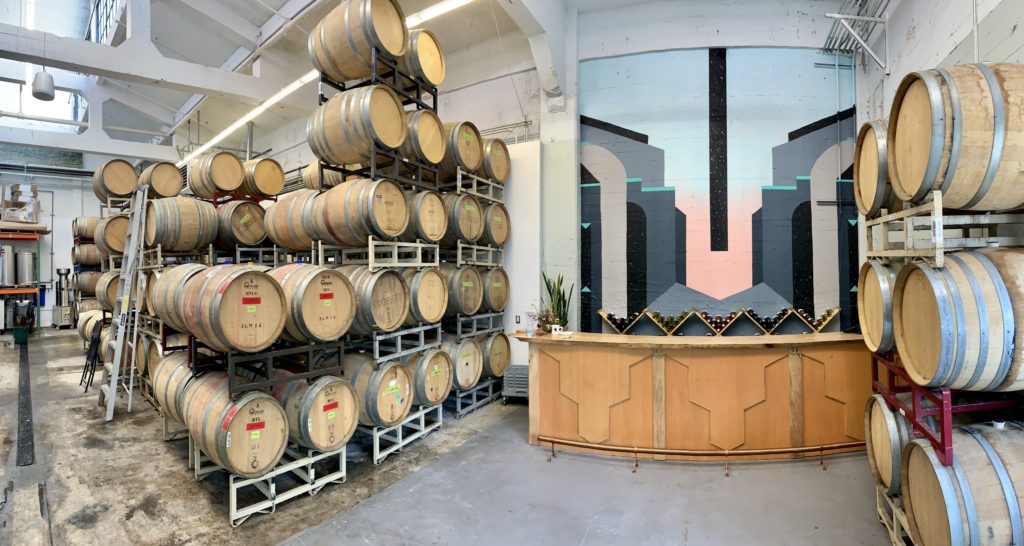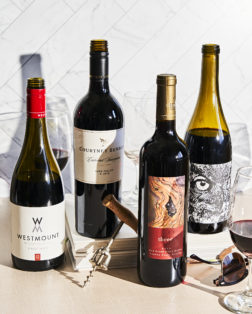
Innovative Producers Are Making Sparkling Red Wines for Everyday Drinking
Raise your glass to some of the best red sparkling wine in the West.

Adam Decker/Courtesy of Carboniste
West Coast winemakers are working to give red sparkling wine more attention. Established brands like Mumm Napa and Treveri, as well as newer winemakers such as the California-based Carboniste and Hammerling Wines, are experimenting with the style to bring the celebratory feel to more than just Lambrusco and Champagne.
Dan Person, owner and winemaker of Carboniste in Napa Valley, blended his first sparkling red wine at the Thanksgiving dinner table when he combined a sparkling Albariño with a Merlot, resulting in a light, wacky flavor experience.
“It started as an experiment to see what sparkling red wine could be and what are the potential outcomes, what could be the most meaningful and most novel,” Person says of the discovery. “Instead of trying to mimic other people, we’re trying to add to the world of wine.”
Person wants the style to be equally accepted at a Wednesday dinner and holiday celebration. “Champagne shot itself in the foot because it’s been seen as a special occasion wine and it’s priced as that,” he says.
Josh Hammerling, winemaker and founder of Hammerling Wines in Berkeley, California, saw sparkling reds as a fun, refreshing way to enjoy sophisticated wines, and a challenge to master the chemical technicalities. His Sparkling Red Nouveau will be released in November, followed by a Sparkling California Passetoutgrain in February.
“I was just trying to make things that I wanted to exist in the market that weren’t there yet, and I saw sparkling red wine as the ideal pizza wine,” Hammerling says. “It goes well with barbecue foods, things that are charred, saucy, and could be eaten with your friends at a pizzeria.”
Syrah and Lambrusco wines have long been the face of sparkling reds, but winemakers are now exploring Pinot Noirs and Merlots to find intriguing, deep flavor profiles. For his own sparkling red wines, Hammerling has included Gamay with Pinot Noir and Pinot Meunier.

Courtesy Hammerling Wines
“The fun thing about being in the wine industry is we’re curious people,” Hammerling says. “When there aren’t really any rules, or the only things we really know are Lambrusco and carbonic Syrah, we can’t really help ourselves but to indulge in the possibility of what you can make.”

The Sunset Wine Club
Wine Club members receive:
- 6 featured wines, shipped every 3 months
- Tasting notes and suggested pairings for Sunset recipes
- The first look at rare gems in the Sunset wine shop
- Exclusive member events
Hammerling and Person both made it a personal goal to saturate the market by producing their own American sparkling wines. They even collaborate with other winemakers to teach them the methods.
“We’re just trying to help them with the technological side because there’s different equipment and processes,” Person explains. “We’re trying to get more brands of sparkling wine and make them commercially relevant, so we want to produce more than a couple hundred cases.”
Essentially, the entire process of making sparkling wine differs from other varieties, beginning with the harvesting locations and dates. Sparkling wines require more acidic grapes, but the fruit loses acidity as it ripens, so makers need to harvest early and in a small time frame, typically during the beginning of August.
“The cheat code in California is elevation,” Hammerling shares. “You go as high as possible and as cold as possible so ripening is slower and flavors are more distinctive.”
Winemakers also use nontraditional methods to produce sparkling red wine. Forced carbonation involves pumping CO2 gas into the chilled wine to create bubbles, whereas both the pét-nat and traditional, or Champagne, methods rely on bubbles produced from fermentation. The risk for sparkling wines comes from potentially having too little yeast, thus yielding a distastefully sweet and less fizzy wine.
Both Person and Hammerling utilize a process called carbonic maceration, or putting all of the stem, seed, and skin of the grape in with the base of the wine, for full-bodied flavor and better control over the bubbles. Person, for one, macerates a base sparkling wine in a red barrel for five days, just long enough to alter the color and flavor of the wine without changing the chemistry with the tannins.
“Maybe it’s because we don’t respect the rules, but we’re not trying to be Champagne,” Hammerling says. “We don’t care about those comparisons, we’re trying to carve out a new category that’s fun first, but also serious.”
Five to Try
Raise your glass to some of the best red sparkling wine in the West.
